Lydia Bolton is subverting notions about sustainable fashion

From slashed charity shop dresses to second hand tracksuits – the designer’s signature is born from a zero waste approach to fashion.
Style
Words: Jake Hall
Photography: Zeinab Batchelor
When she was 14 years old, Lydia Bolton set herself a personal challenge: design at least one new outfit every day. “I had these mad books full of weird dresses and drawings,” she laughs over the phone, recalling wild, extravagant looks inspired by the maximalism of John Galliano and Alexander McQueen. Now 25, she’s a fashion graduate with years of experience as a designer at House of Holland. Earlier this year, she decided to take the plunge and go it alone, launching her own business.
As should be the case in the midst of the worsening climate crisis, sustainability is her key focus. As opposed to buying new fabrics, she slashes charity shop dresses and stitches them onto reworked, second-hand tracksuits; T‑shirts are patched together from scraps of old material, making each of her garments completely unique.
At the minute, Bolton does most of the cutting herself. She plans to scale up her business, but on her own terms: garment runs will be limited and produced according to demand, avoiding the mass production of textile waste that the industry currently generates. “I was trying to think of a specific problem that I could solve,” she explains, “and I kept coming back to the issue of textile waste being thrown into landfill.” By repurposing unwanted garments (known in the industry as “deadstock”), Bolton is building a design blueprint all her own – and working hard to rectify the damage that’s already been done.

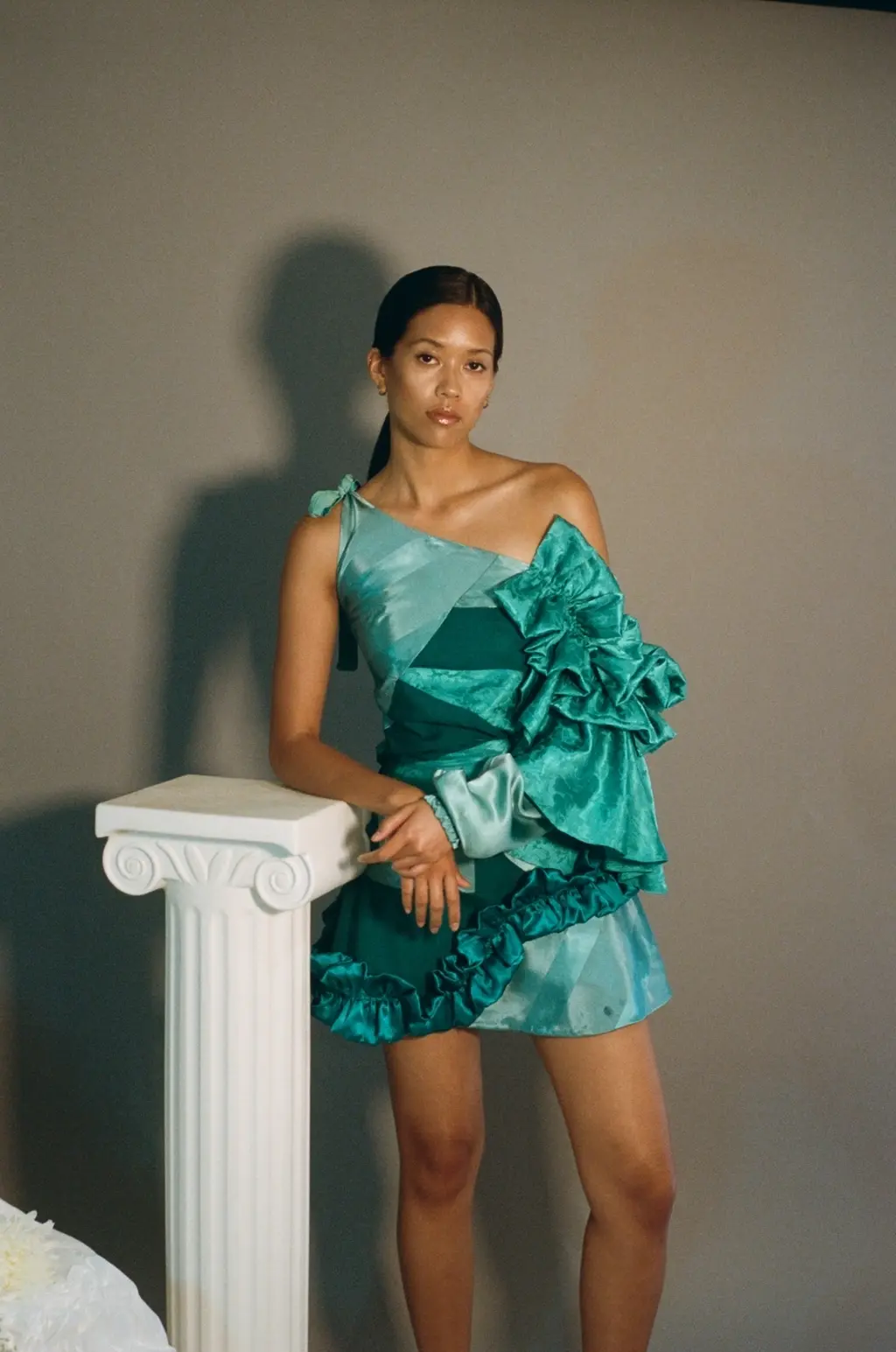
Growing up, did you always know you wanted to work in fashion?
It was always my number one – I loved the over-the-top things! I loved Galliano both at Dior and at his own label, as well as Alexander McQueen. They were using their creativity to make art, especially McQueen’s (SS01) razor clam shell dress – I just found them super inspiring.
That element of creating fashion from unconventional materials rings true in your work, was that always the case?
As a teenager, yes – I even made corsets from paper bags! But then I studied fashion and started learning about buying fabrics and costing collections. I started to think it was contradictory to be interested in sustainability and work in fashion, because so many clothes have already been produced. That made me think about making new clothes from old ones.
Were you also thinking about sustainability when you started your fashion degree?
Not at all. I was thinking about it more generally, but not really as a designer until about a year ago. Before that I had been more focussed on style and aesthetic, but then I realised that fashion has a responsibility to the planet. It’s up to designers to think of how the industry can be less harmful.
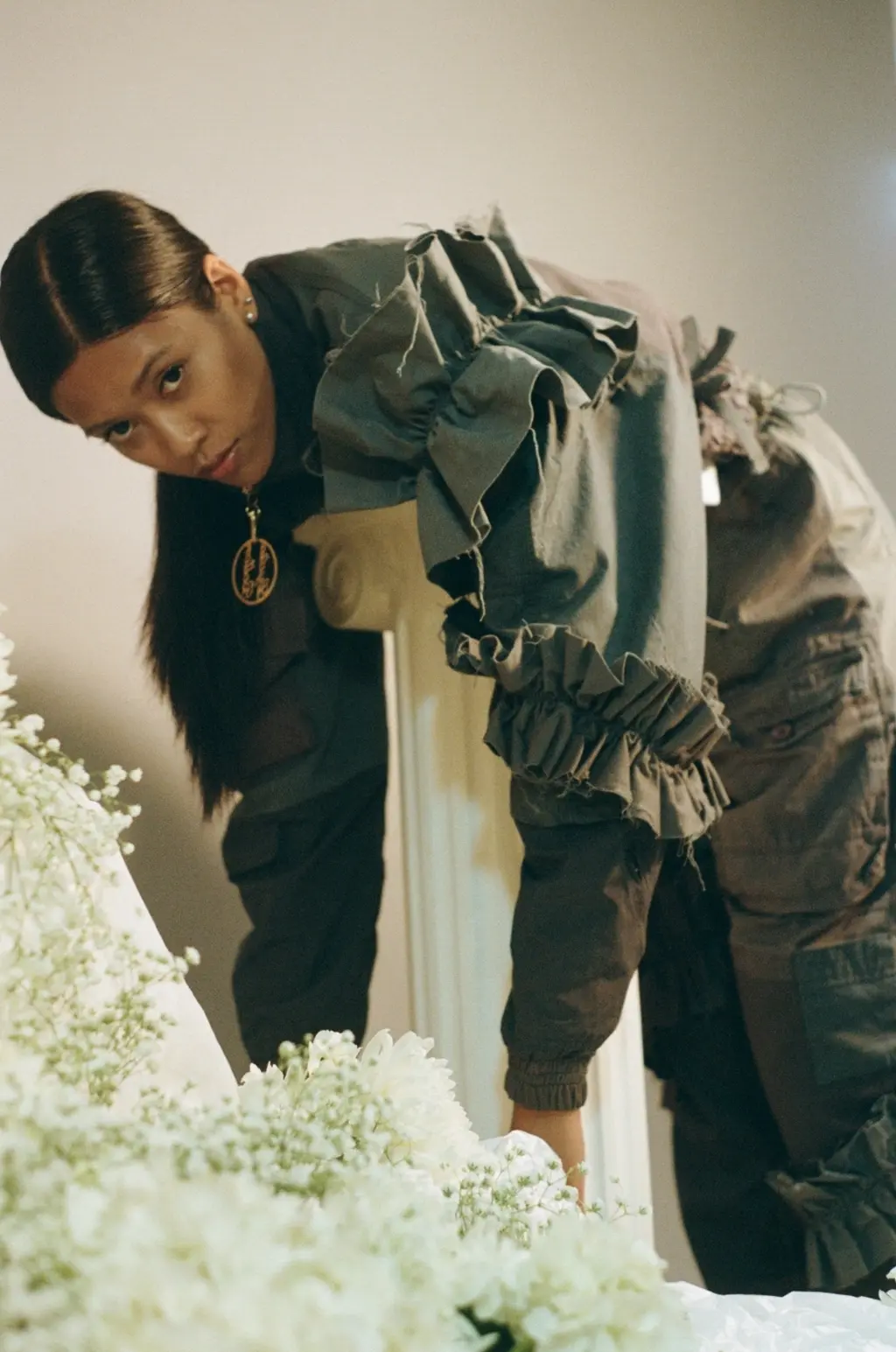
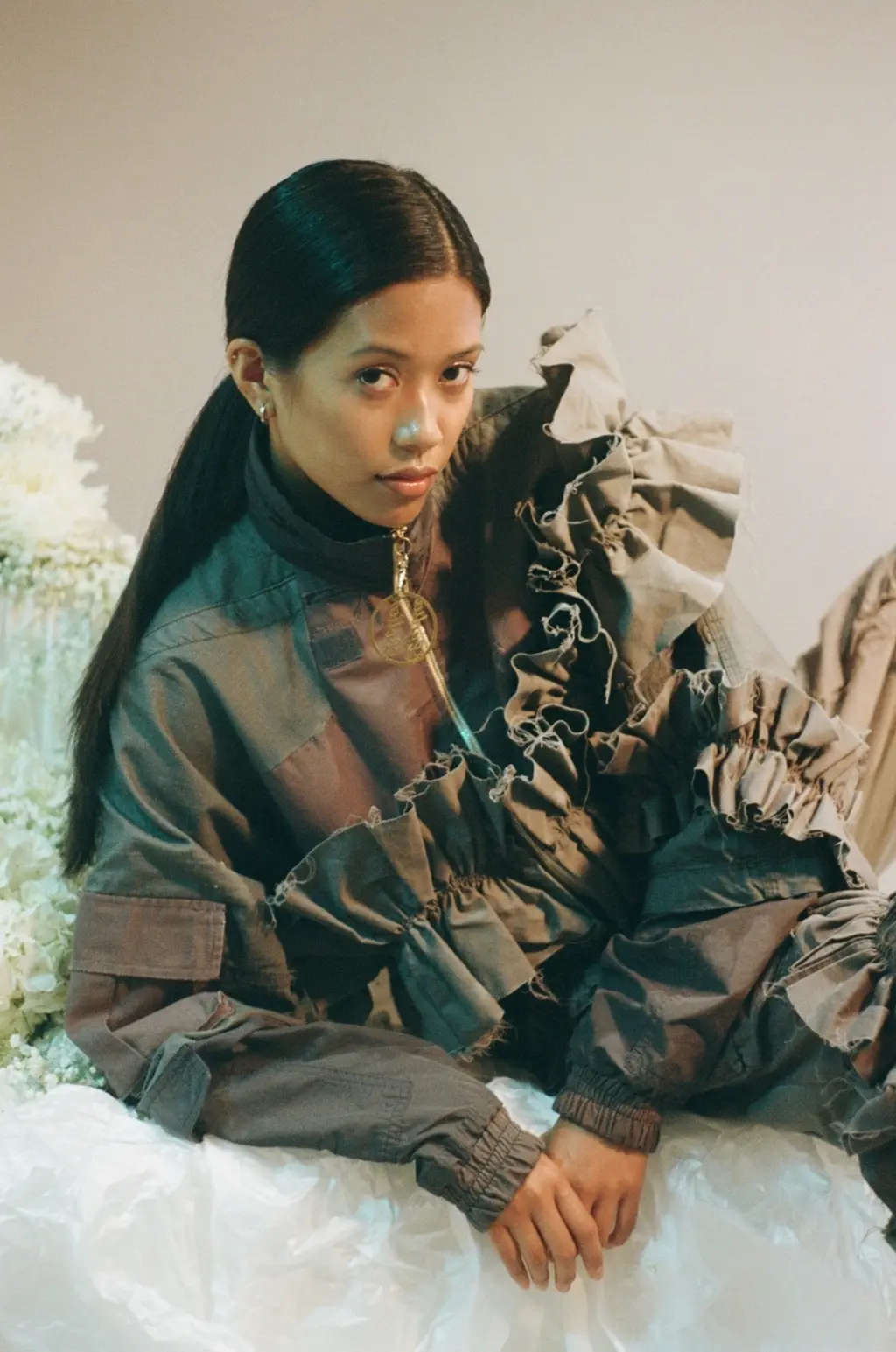
Do you still think that fashion and sustainability are contradictory?
I don’t think they’re completely incompatible, I think it’s just about finding creative new approaches. But the way that fast fashion in particular currently works, and even the impact that the fashion week system has… designers are starting to understand how important it is, and awareness is increasing. New designers can start a business with sustainability in mind, but the older, more established houses have a harder time catching up, because they already have their mills and supply chains in place.
How have you taken this knowledge and used it in your own business, has it been a steep learning curve?
It is, but working at House of Holland gave me so much insight into different parts of the process. You really have to stay positive, when in reality you’re thinking: “okay, how am I going to do this? Help!” With my business, I’m doing small-batch production. I refuse to have deadstock, because that’s waste – so it’s about working to demand rather than producing huge numbers.
Your ruffled tracksuits in particular have become a signature, how did the idea for those first come about?
I love sportswear and I love girly things, so it really was just about combining the two. My graduate collection was called “The Girl That Wore A Tracksuit To Prom”; I had cut up old tracksuits, made these frills and the just appliquéd them on. The graduate collection was quite girly so I think it’s matured since then, but I wanted to take that Galliano, more-is-more approach and bring an element of those super-luxe ballgowns to the designs, too.
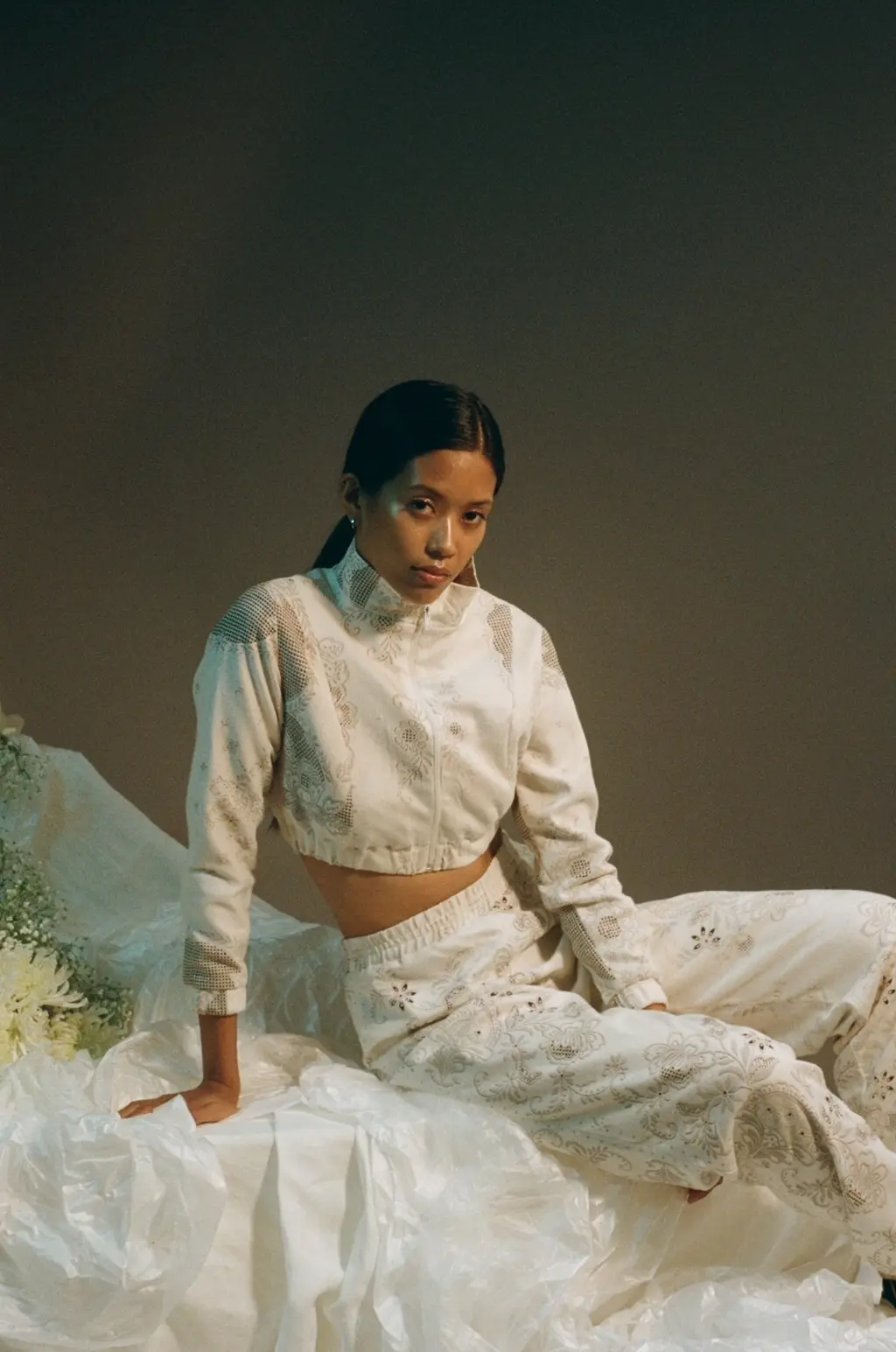
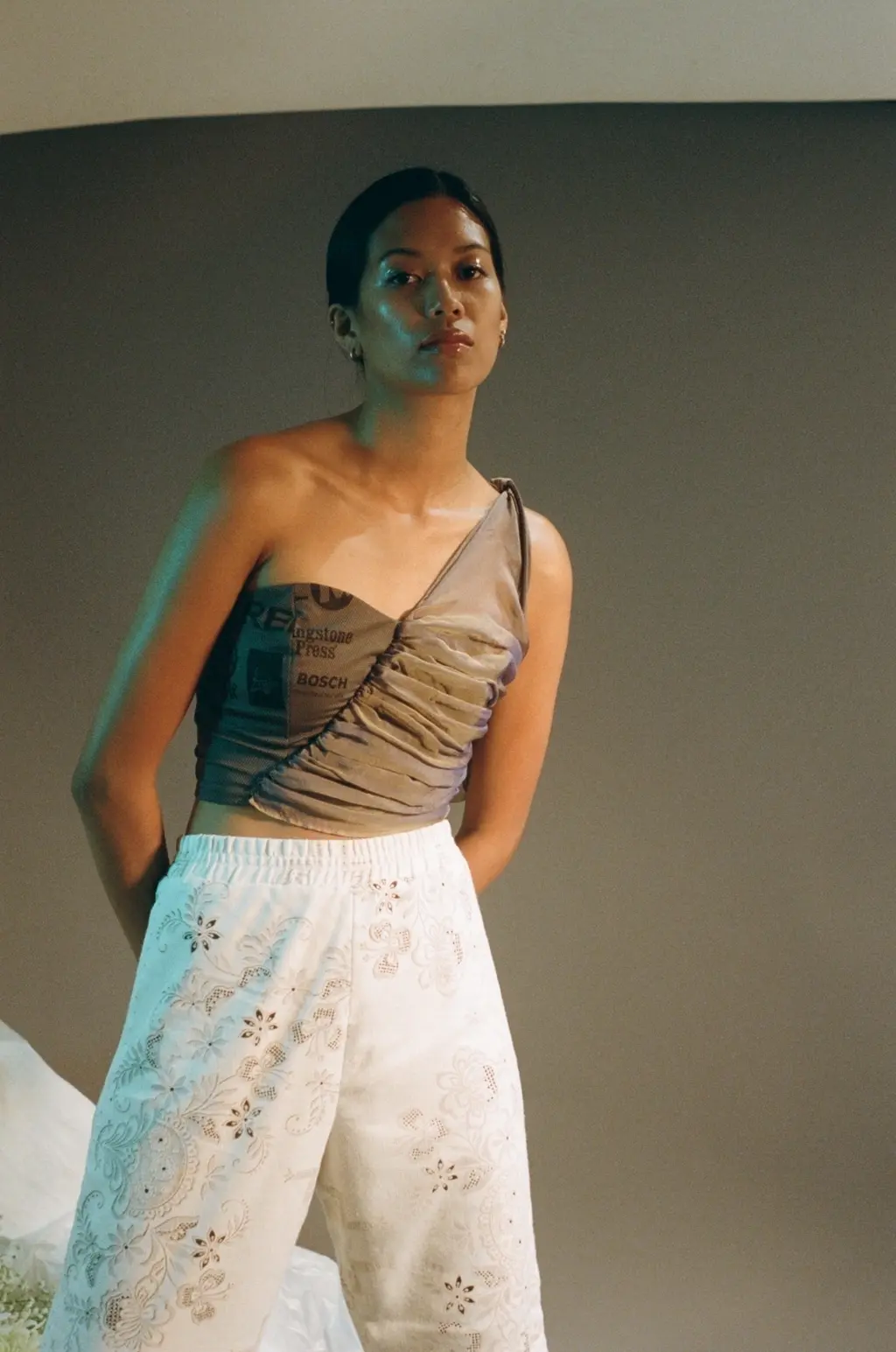
Do you think people still have this really fixed idea of what “sustainable fashion” looks like?
For a lot of people, I think it means a white T‑shirt made from organic cotton. Organic fabrics are really important, but the most sustainable way to approach it is not to use new things at all. I always say that the most sustainable wardrobe is the one that you already have, but there are rules that I have to follow, like not buying new fabric. That structure makes me approach design in a more creative way, because I don’t have this expansive freedom; I have to find solutions and approach things differently.
In terms of your future, do you see yourself following the traditional fashion calendar?
I think I’ll produce at my own rate, but I’ll probably loosely aim to create two collections a year. I like the idea of collaborating as well – maybe I could team up with brands that have deadstock, make something from that and then sell it, to give an example of how to reduce waste. I feel like I have the freedom to not follow the industry model if I don’t want to though, and I think that probably applies to a lot of young designers now. A lot don’t want to conform to that system – and that’s quite refreshing.
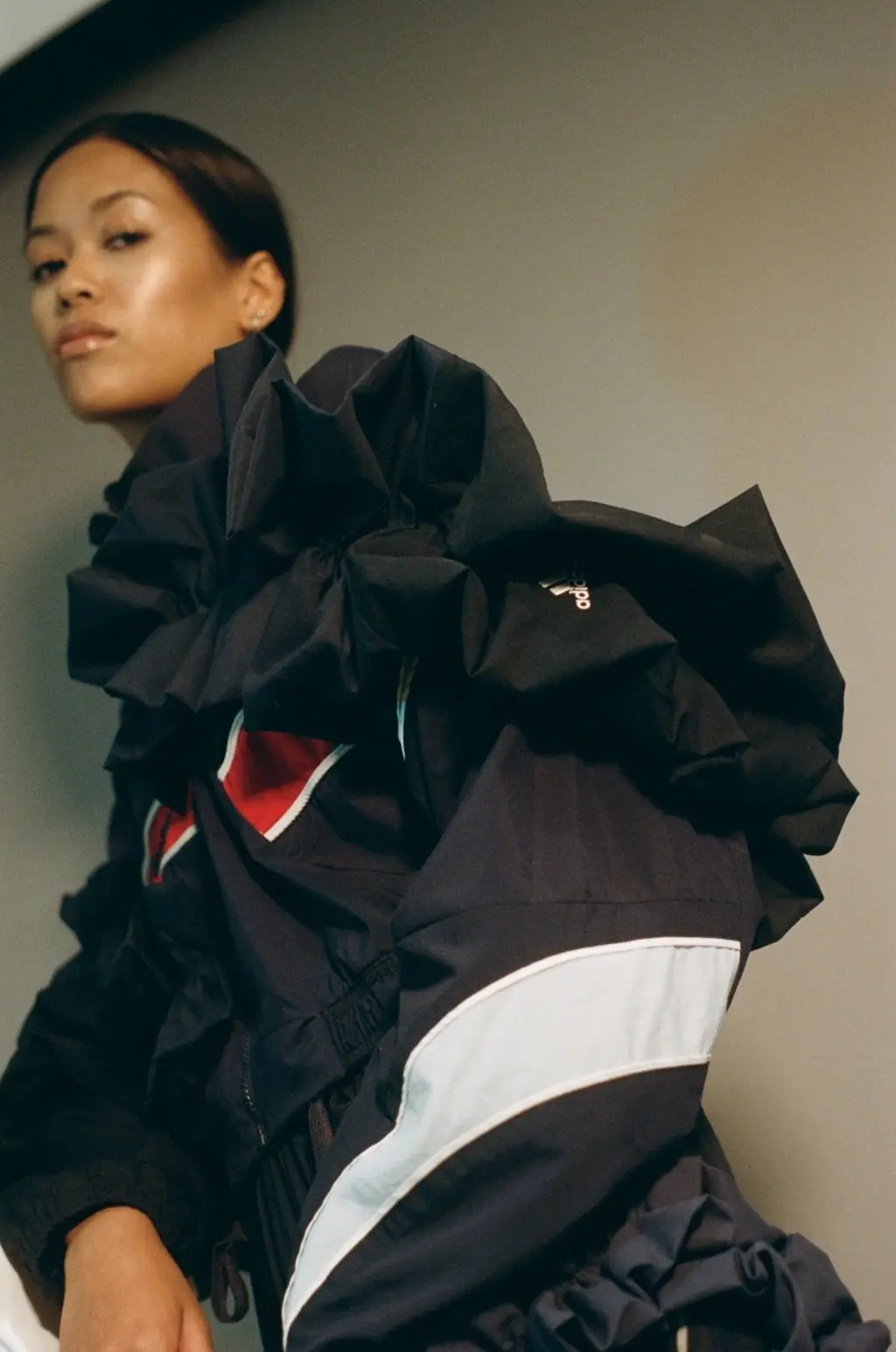
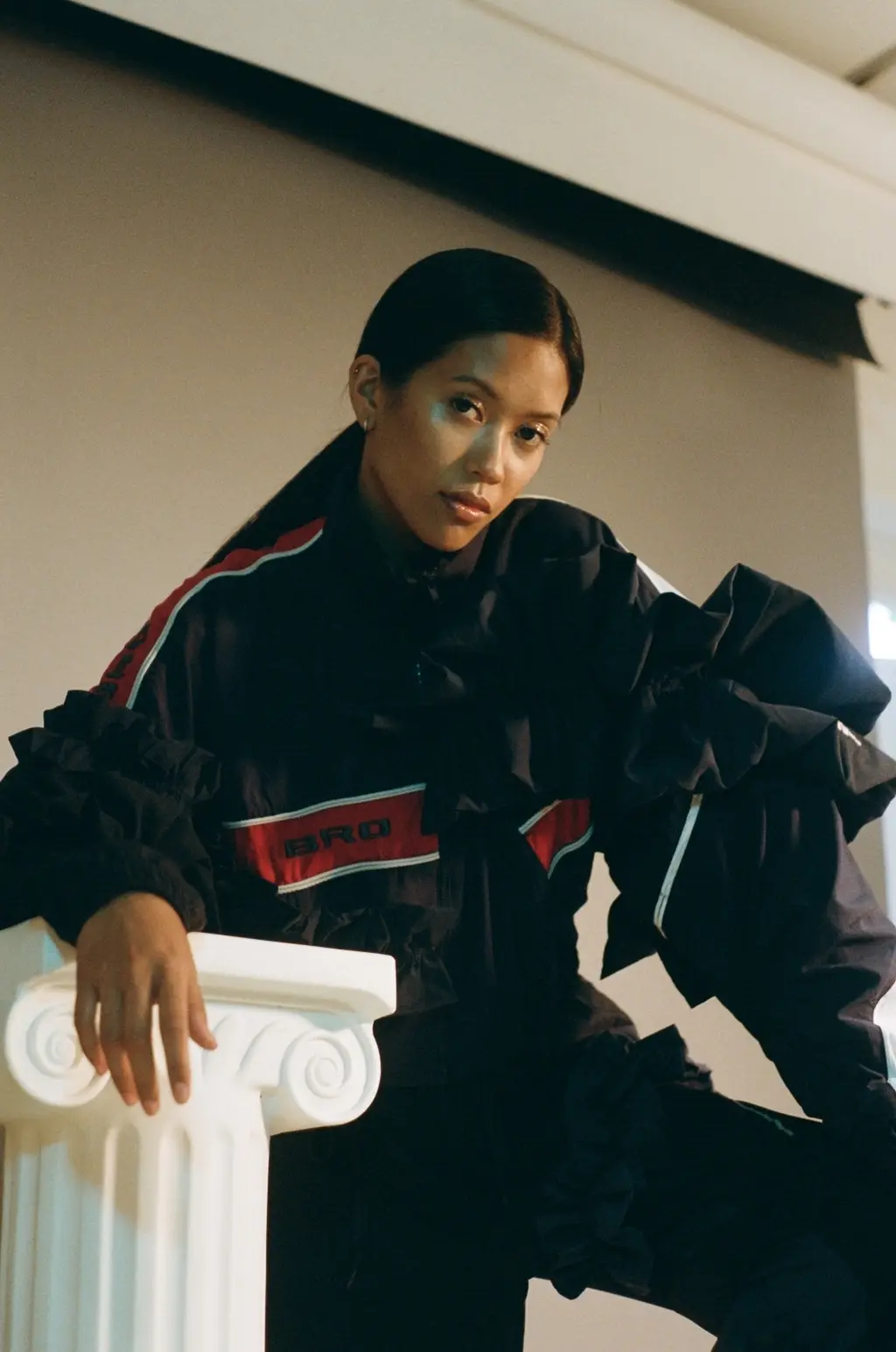
We also know that the current system causes burnout, as we saw with Virgil Abloh. It’s also a common problem amongst fashion students; how did you deal with that?
I think I have a high threshold. I get up at 6am, go to the gym for an hour, cycle to work and then work evenings in a pub until 3am! It’s much harder when you’re interning, because you aren’t being paid. I was working five nights a week in the pub to pay rent, so now life feels comparatively easy! But fashion does give you a warped sense of what hard work is, and I think a lot of people in the industry tend to have quite obsessive personalities and attitudes towards workload. I’m happier now, because I’m doing my own thing. It’s what I want to do every day.
You’re right – that excessive workload is definitely normalised so much, especially amongst students and interns!
Oh, completely – it’s not good, but it really is the norm! I will say that interning was great in the sense that I learned so much through doing it, but it isn’t a sustainable lifestyle at all. It does teach you to work hard though, and I guess if you hated it that much you would just quit fashion!
For me, the most important thing to remember is that everyone works at their own pace, and everyone gets different opportunities at different times. I remind myself not to look at that person who just got that amazing job – the key is to ask yourself how you want to work. That’s so much healthier than worrying about competition, or just doing what you feel like you should be doing.
Model Maine Telan Set Callie Pettigrew MUA Tilly Jones









